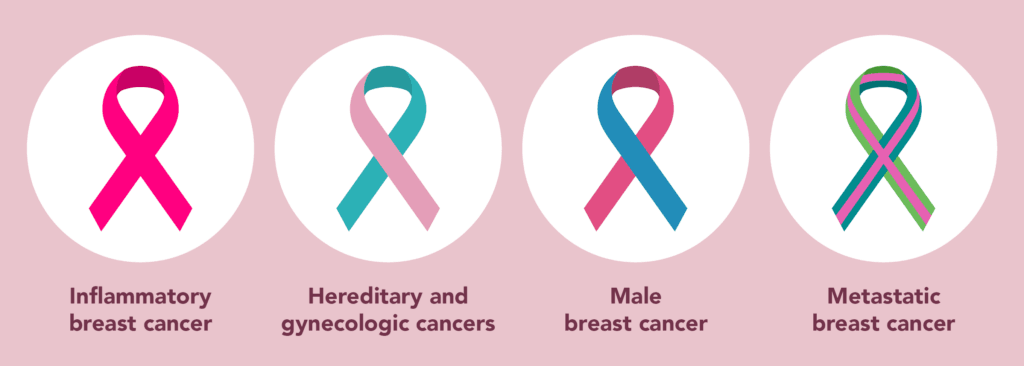Breast cancer is one of the most common types of cancer affecting millions of women globally each year. Awareness about the disease, its symptoms, risk factors, and available treatments can save lives through early detection and informed decision-making. In this article, we’ll explore everything from the basics of breast cancer to the importance of support during recovery.
What is Breast Cancer?
Breast cancer is one of the most common cancers affecting women worldwide, with millions of new cases diagnosed each year. It occurs when cells in the breast tissue grow uncontrollably, forming a tumor that may spread to other parts of the body. The impact of breast cancer on global healthcare is substantial, as it represents a significant portion of cancer diagnoses and deaths. Efforts to raise awareness, improve early detection, and advance treatment options have been vital in reducing mortality rates and improving quality of life for patients.
Symptoms of Breast Cancer
Breast cancer symptoms can vary, but there are some common signs to watch for:
- Lumps or masses in the breast: A hard, painless lump is often the most common sign. However, some lumps can be tender or painful.
- Nipple discharge: Unexplained discharge, particularly if it’s bloody or occurs without squeezing, can be an early warning sign.
- Changes to the breast skin: Swelling, redness, or thickening of the skin, as well as dimpling (which may resemble the skin of an orange), can indicate breast cancer.
- Nipple changes: Inversion or pulling inward of the nipple or changes in the appearance or texture of the nipple should be checked by a doctor.
- Pain in the breast or nipple: While pain is not always associated with breast cancer, persistent discomfort or tenderness could be a symptom.
Early detection of these signs can lead to a faster diagnosis and better treatment outcomes, making regular self-exams and screenings critical.
Diagnosis of Breast Cancer
Detecting breast cancer early significantly increases the chances of successful treatment. The diagnostic process includes several steps:
- Mammography: A low-dose X-ray that helps identify abnormal areas in the breast tissue, often used for routine screening in women over 40 or those at high risk.
- Tumor marker tests: These blood tests check for specific proteins produced by cancer cells, helping to assess the presence or progression of cancer.
- Biopsy: The most definitive way to diagnose breast cancer, a biopsy involves taking a small tissue sample from the suspicious area to examine for cancer cells.
Depending on the stage and type of breast cancer, additional imaging tests like MRIs, ultrasounds, or CT scans may be recommended.
Treatment Options for Breast Cancer
Breast cancer treatment plans are tailored to each patient’s specific case, and there are several options available:
- Surgery: This is often the first line of treatment. Options include a lumpectomy (removing the tumor and some surrounding tissue), mastectomy (removal of the entire breast), and breast reconstruction to restore the breast’s appearance after a mastectomy.
- Chemotherapy: This treatment uses drugs to target and kill cancer cells throughout the body. It’s often used when the cancer has spread or to reduce the size of the tumor before surgery.
- Radiation therapy: High-energy rays are used to destroy cancer cells in a localized area, typically after surgery to prevent recurrence.
- Targeted therapy: This treatment focuses on specific molecules involved in cancer growth, offering a more personalized approach with fewer side effects than chemotherapy.
- Immunotherapy: By harnessing the body’s immune system to fight cancer, immunotherapy has become a promising option for certain breast cancer types.
Survival Rate and Risk Factors
Breast cancer survival rates vary based on factors such as the cancer’s stage at diagnosis, the patient’s overall health, and access to treatment. The 5-year survival rate for early-stage breast cancer can exceed 90%, but it declines significantly for later-stage diagnoses.
Several risk factors contribute to the development of breast cancer:
- Family history: A woman with close relatives who have had breast cancer is at higher risk.
- Genetics: Inherited mutations, particularly in the BRCA1 and BRCA2 genes, significantly increase the risk of developing breast and ovarian cancer.
- Age: The risk of breast cancer increases with age, especially after 50.
- Lifestyle factors: Obesity, a sedentary lifestyle, alcohol consumption, and smoking are all linked to higher breast cancer risk.
Genetic Link and BRCA Gene Testing
Genetics play a critical role in breast cancer, particularly with the BRCA1 and BRCA2 gene mutations, which can greatly increase the likelihood of developing the disease. Women with these mutations often opt for genetic testing to assess their risk and make informed decisions about preventive measures. High-risk individuals may choose increased screening, medication, or even preventive surgeries, like mastectomy, to lower their chances of developing breast cancer.
Early Detection Benefits
Early detection of breast cancer is crucial for better treatment outcomes and higher survival rates. Regular mammograms, self-exams, and being vigilant about changes in the breasts can lead to a diagnosis at an early stage, when treatment is most effective. Women aged 40 and older, or those with risk factors, are encouraged to undergo annual screenings to catch any signs of cancer before it spreads.
Surgery Options
Surgery is often necessary to remove cancerous tissue from the breast. The most common surgical options include:
- Lumpectomy: This procedure removes the tumor and some surrounding tissue, preserving most of the breast.
- Mastectomy: Involves removing one or both breasts entirely, usually performed when the cancer is widespread.
- Breast reconstruction: For women undergoing mastectomy, breast reconstruction surgery can restore the appearance of the breast using implants or tissue from other parts of the body.
Chemotherapy, Radiation, and Targeted Therapy
Each treatment has a specific role in managing breast cancer:
- Chemotherapy: Often used to shrink tumors before surgery or eliminate any remaining cancer cells post-surgery. Side effects include hair loss, fatigue, and nausea.
- Radiation Therapy: Typically used after surgery to target any remaining cancer cells in the breast or surrounding areas.
- Targeted Therapy: Designed to attack cancer cells with fewer side effects by focusing on specific molecular targets involved in the cancer’s growth.
Managing the Emotional Impact
A breast cancer diagnosis can be emotionally overwhelming. Coping with fear, uncertainty, and physical changes is difficult, but support is available. Patients should seek emotional support from loved ones, support groups, or counselors. Self-care practices, such as mindfulness, relaxation exercises, and maintaining social connections, are essential for mental well-being.
Lymphedema and Long-Term Effects
One long-term effect of breast cancer treatment is lymphedema, a painful swelling that can occur in the arm or chest after lymph node removal or radiation therapy. It can be managed with physical therapy, compression garments, and careful monitoring. Other long-term effects may include changes in the appearance or sensitivity of the breast and surrounding tissue.
Maintaining Health After Treatment
Life after breast cancer treatment requires a focus on maintaining overall health:
- Nutrition: A diet rich in fruits, vegetables, lean proteins, and whole grains helps support recovery and reduces the risk of cancer recurrence.
- Exercise: Staying active helps manage weight, improve mood, and lower cancer recurrence risk.
- Stress management: Meditation, yoga, and other relaxation techniques can help manage the emotional stress of recovery.
Support Resources
Breast cancer patients have access to a variety of support resources:
- Online support groups: Websites like BreastCancer.org and CancerCare offer online communities for patients and survivors to connect and share experiences.
- Educational materials: The American Cancer Society and National Breast Cancer Foundation provide comprehensive resources about breast cancer prevention, treatment, and recovery.
- Medical professionals: Oncology specialists, breast surgeons, and mental health professionals are all integral in providing the medical and emotional support needed during and after treatment.
Conclusion
Breast cancer is one of the most common types of cancer affecting millions of women globally each year. Awareness about the disease, its symptoms, risk factors, and available treatments can save lives through early detection and informed decision-making. In this article, we’ll explore everything from the basics of breast cancer to the importance of support during recovery.





